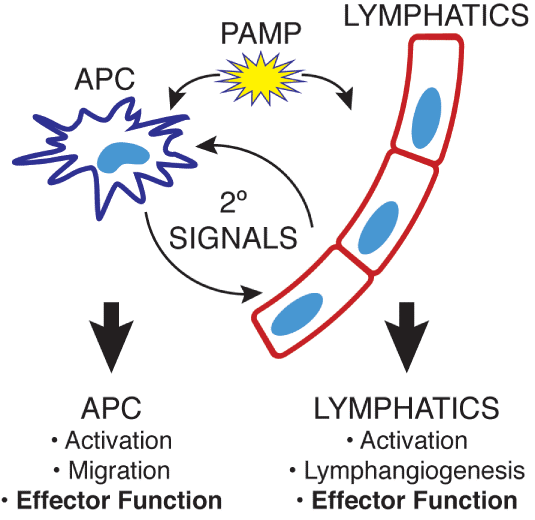
 |
| Figure 1: Integration of the peripheral lymphatics in the immune response. The peripheral lymphatics are capable of responding directly to pathogen associated molecular patterns (PAMPs) as well as to secondary immune signals produced by antigen presenting cells (APCs) and other immune cell populations. In response to these signals, the lymphatics activate and undergo lymphangiogenesis and/or regulate their expression of key molecules required for their effector function. The activated lymphatics can then contribute to regulating the activation, migration, and effector function of other immune cell populations. |